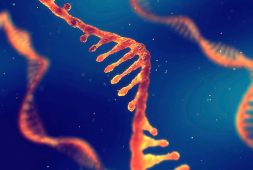
Numerous studies aiming to identify the underlying causes of various diseases often read like scientific endeavors, lacking the allure of a narrative straight out of a Marvel comic book. However, a recent publication in the journal Nature Aging presents a distinctive approach, suggesting a potential treatment for neurodegenerative diseases, such as Huntington’s, within the realm of tree trunks.
In this study, researchers unveil a fascinating connection between plant biology and human health. The focus is on a protein named SPP, naturally occurring in plant cells responsible for photosynthesis. Astonishingly, when this protein is introduced into cultured human and animal cells, it demonstrates a significant reduction in protein clumping and alleviation of Huntington’s symptoms—a groundbreaking achievement for the primary goal of the research.
Huntington’s disease is categorized as a proteinopathy, one of nine neurodegenerative disorders characterized by toxic aggregations of polyglutamine proteins. Strikingly, these protein aggregates, innocuous in healthy humans, lead to the death or dysfunction of brain cells in both humans and animals. However, the study reveals that in plants, where similar proteinopathies exist, no damage occurs.
Dr. Ernesto Llamas, the first author of the study affiliated with the University of Cologne’s CECAD Cluster of Excellence for Aging Research, conducted experiments to understand how plants manage toxic protein aggregation. Introducing the toxic mutant protein ‘huntingtin’ into plants, which induces cell death in human neurons, Dr. Llamas observed a remarkable contrast. Thale cress plants actively cleared huntingtin protein clumps, avoiding detrimental effects.
The pivotal role played by chloroplasts—plant-specific organelles responsible for photosynthesis—emerged as a crucial factor in this phenomenon. Unlike animal and human models, plants showcased an ability to sidestep the toxic aggregation of mutant huntingtin, highlighting the potential for harnessing plant-based mechanisms in developing treatments for neurodegenerative disorders. This unconventional approach provides a unique perspective on the intersection of plant biology and human health, offering a promising avenue for future research and therapeutic development.
“Unlike humans,” Dr. Llamas said, “plants have chloroplasts: an extracellular type of organelle that could provide an expanded molecular machinery to get rid of toxic protein aggregates.”
The interdisciplinary team pinpointed the plant protein SPP within chloroplasts as the factor shielding plants from the adverse effects of the problematic human protein.
In experiments involving models of Huntington’s disease, including human cultured cells and the nematode C. elegans, the introduction of plant SPP led to a decrease in protein aggregates and alleviation of disease symptoms.
“We were pleased to observe that expression of the plant SPP protein improved motility of C. elegans worms affected by huntingtin even at later aging stages where the symptoms are even worse,” said Dr. Hyun Ju Lee, a postdoc who was also involved in the study.
Dr. Llamas’ team’s research findings may pave the way for evaluating SPP as a prospective treatment for Huntington’s disease. Additionally, there is optimism that plants could assume a more significant role in contributing to the treatment of human diseases.
“Many people don’t notice that plants can persist amongst variable and extreme environmental conditions that cause protein aggregation,” Dr. Llamas said. “We usually forget that some plants can live thousands of years and should be studied as models of aging research.”
However, it’s not mere optimism. Llamas and his team are confident in the genuine value of their discovery. Dr. Seda Koyuncu, a co-author of the study, asserts that they plan to establish a startup dedicated to manufacturing plant-derived therapeutic proteins. These proteins will undergo testing as potential therapeutics for treating neurodegenerative diseases in humans.



